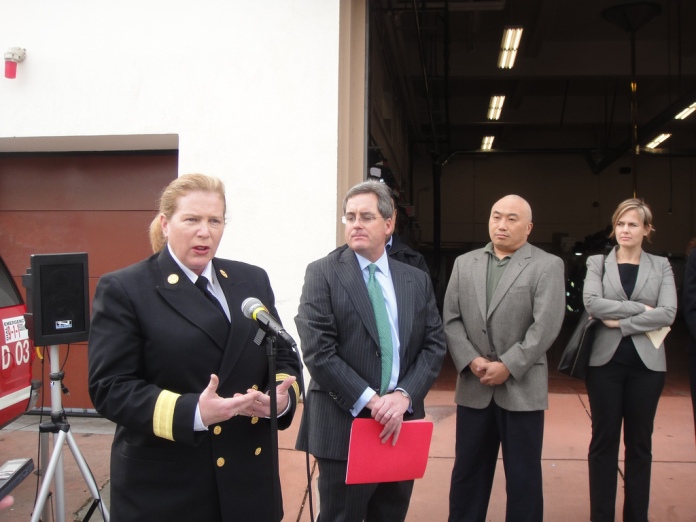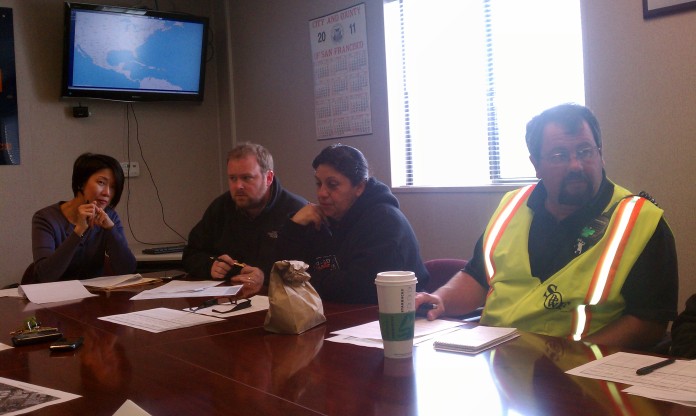
SFFD Chief Joanne Hayes-White, City Attorney Dennis Herrera, SF Paramedic Assn. CEO Arthur Hsieh, Code for America's Jennifer Pahlka
In a great example of Gov 2.0 collaboration in action, City Attorney Dennis Herrera (I work in the City Attorney’s Office as an investigator) and Fire Chief Joanne Hayes-White today announced SFFireApp.org, an effort to increase sudden cardiac arrest survival rates in San Francisco. The initiative seeks to successfully implement innovative mobile technology developed through the San Ramon Valley Fire Protection District and released in the SF East Bay for the iPhone in late January.
Visit SFFireApp.org to learn more and get involved.
San Francisco became the first large municipality to publicly commit to implement the “Fire Department” application, which links CPR-trained volunteers, AED maps and smartphone users in an effort to save lives in the first few minutes after cardiac arrest. Last year, only 10 percent of sudden cardiac arrest victims in SF survived to admission in the hospital. The initiative may also save public health dollars by reducing injury to survivors.
“San Ramon has less than 100 sudden cardiac arrests a year, and for this application to have a meaningful impact on society we need to extend it to larger jurisdictions,” said SRVFPD Chief Richard Price. “We are extremely pleased to be partnering with San Francisco today to extend this life-saving tool to the city as soon as possible.”
City Attorney’s Office press release.






